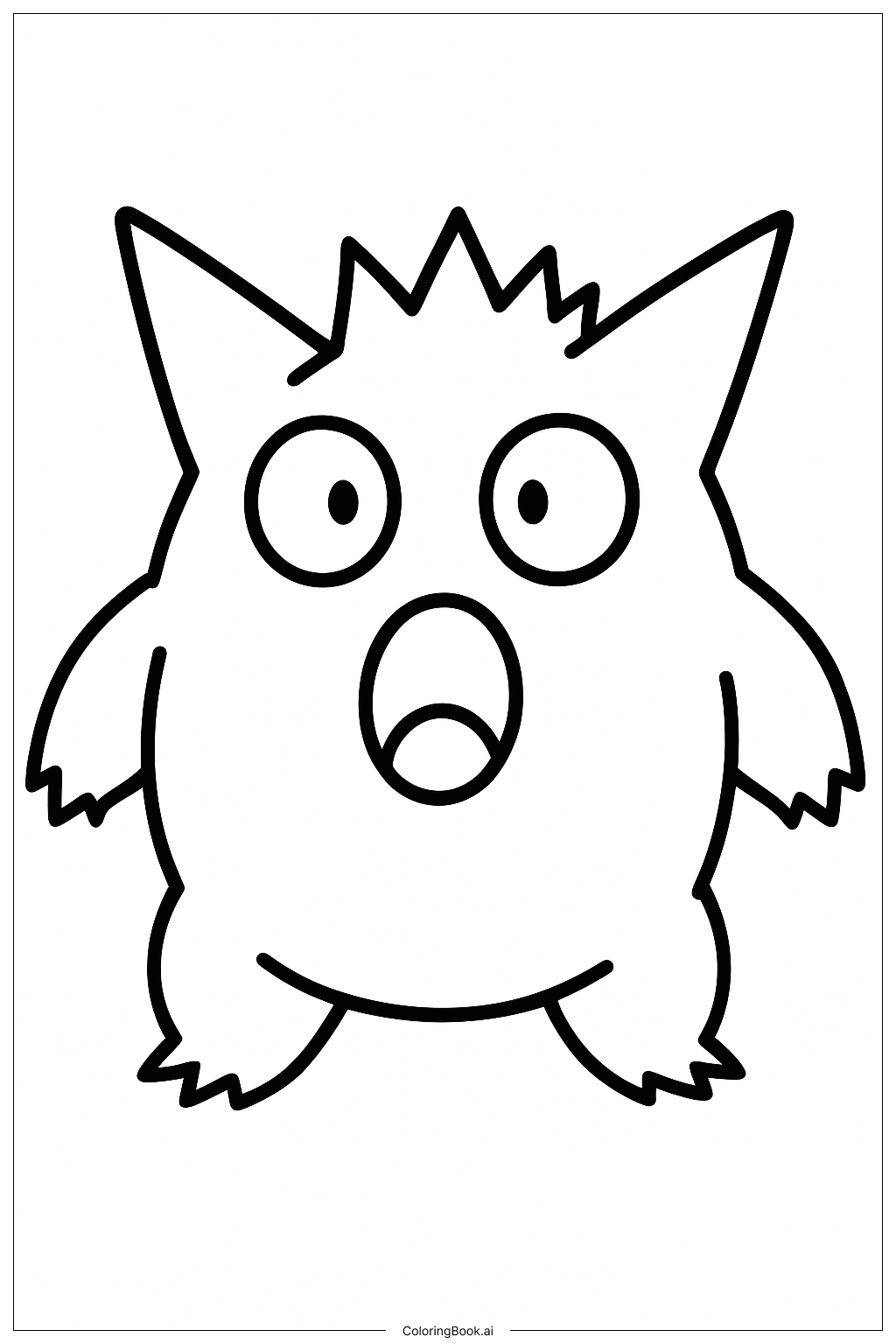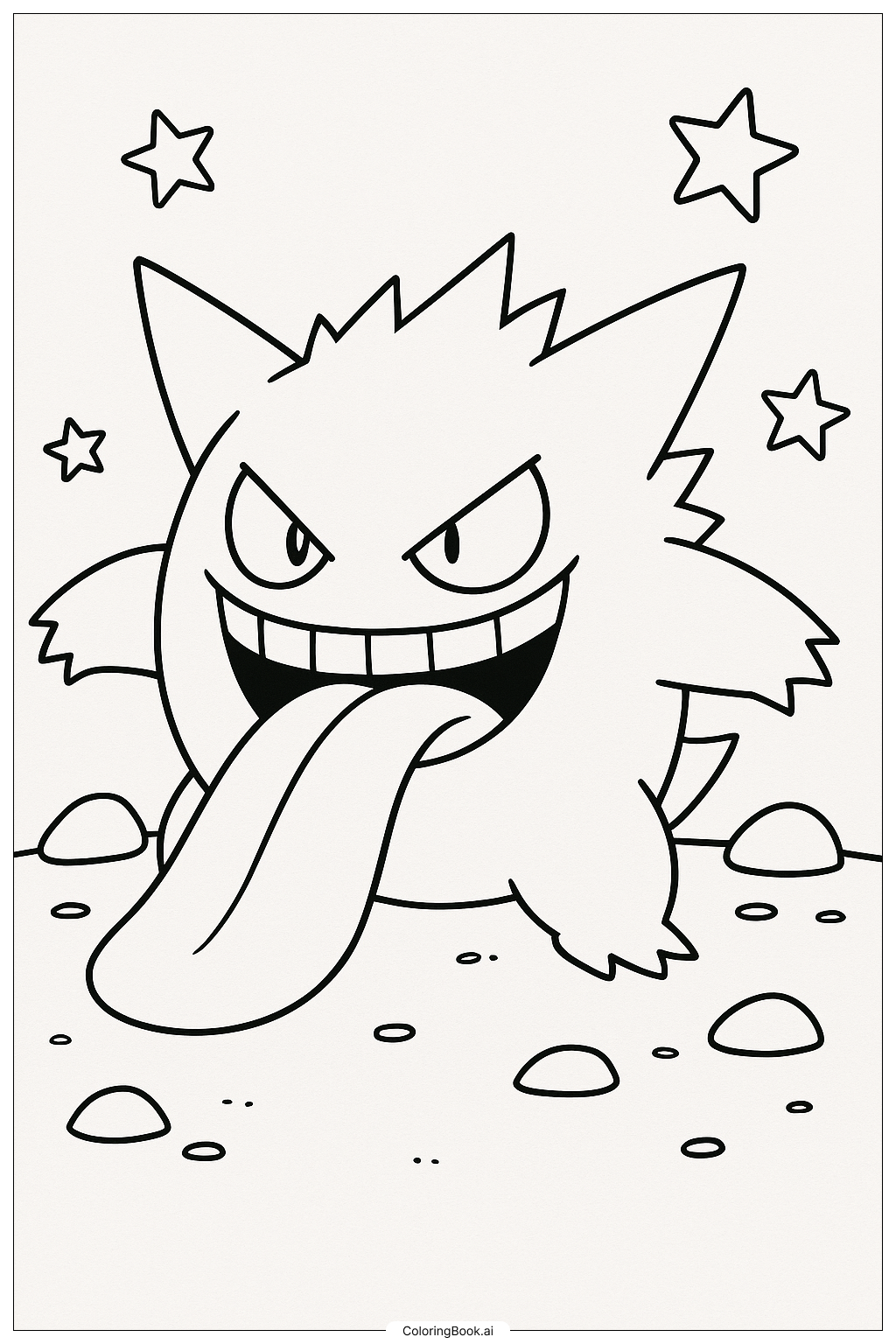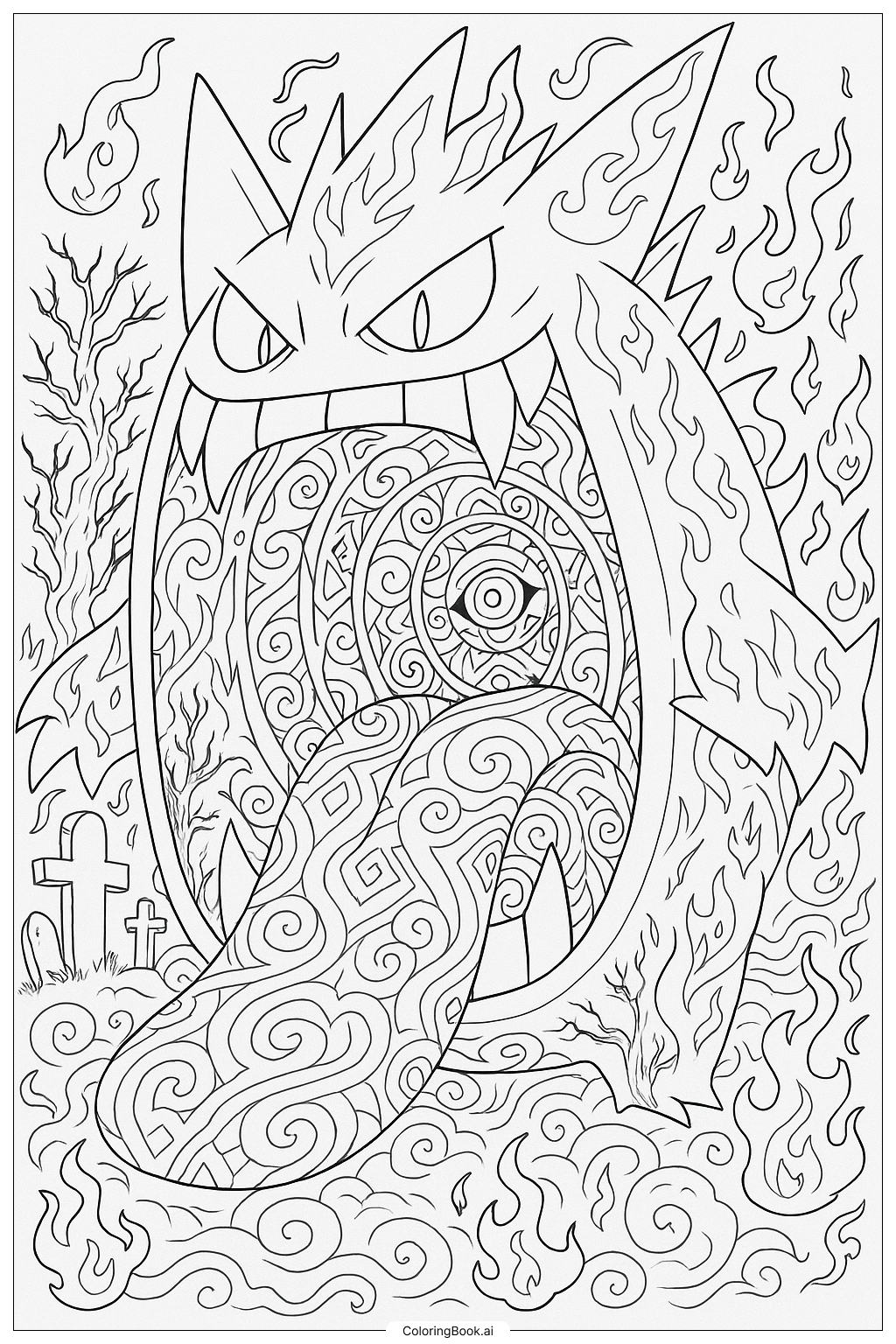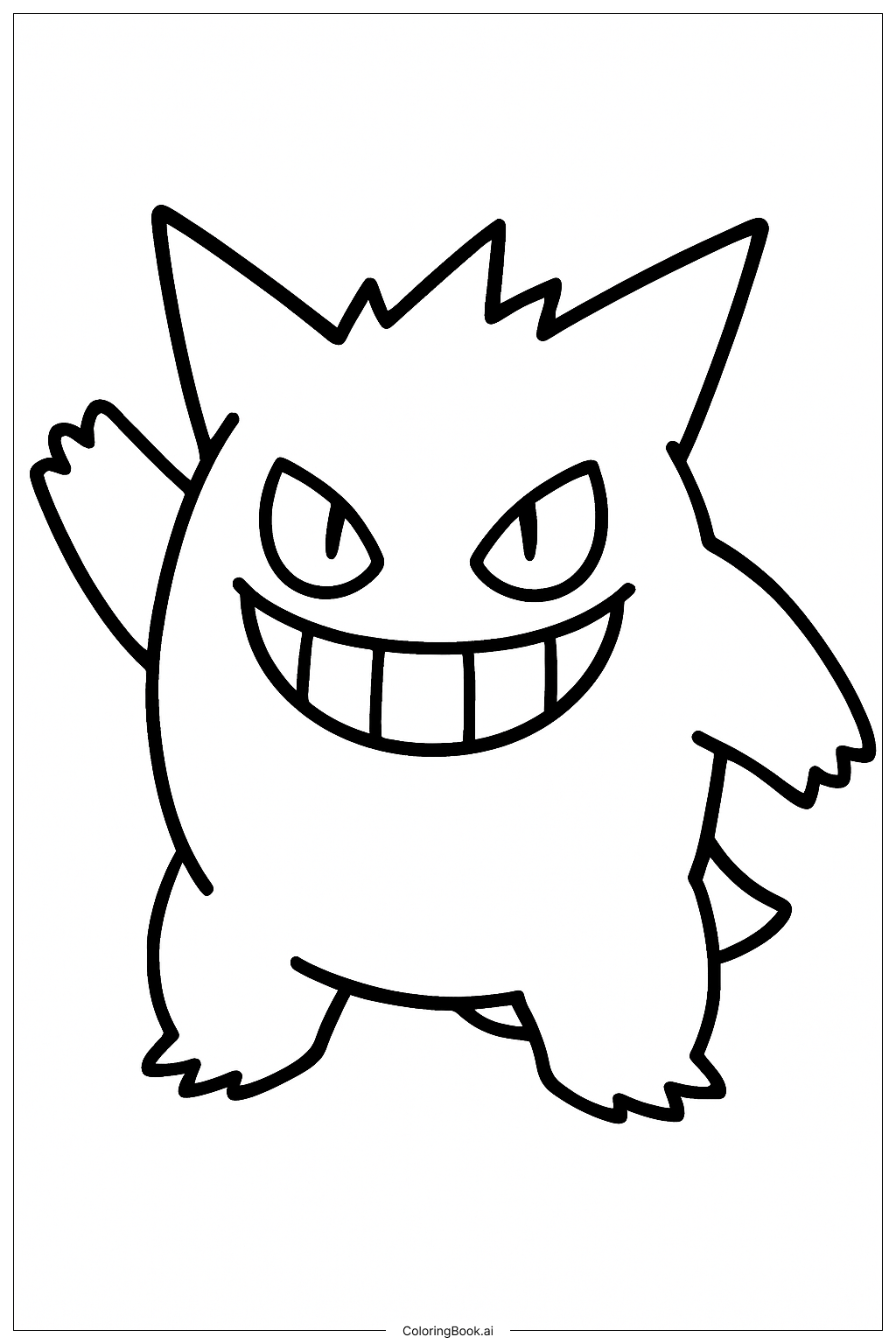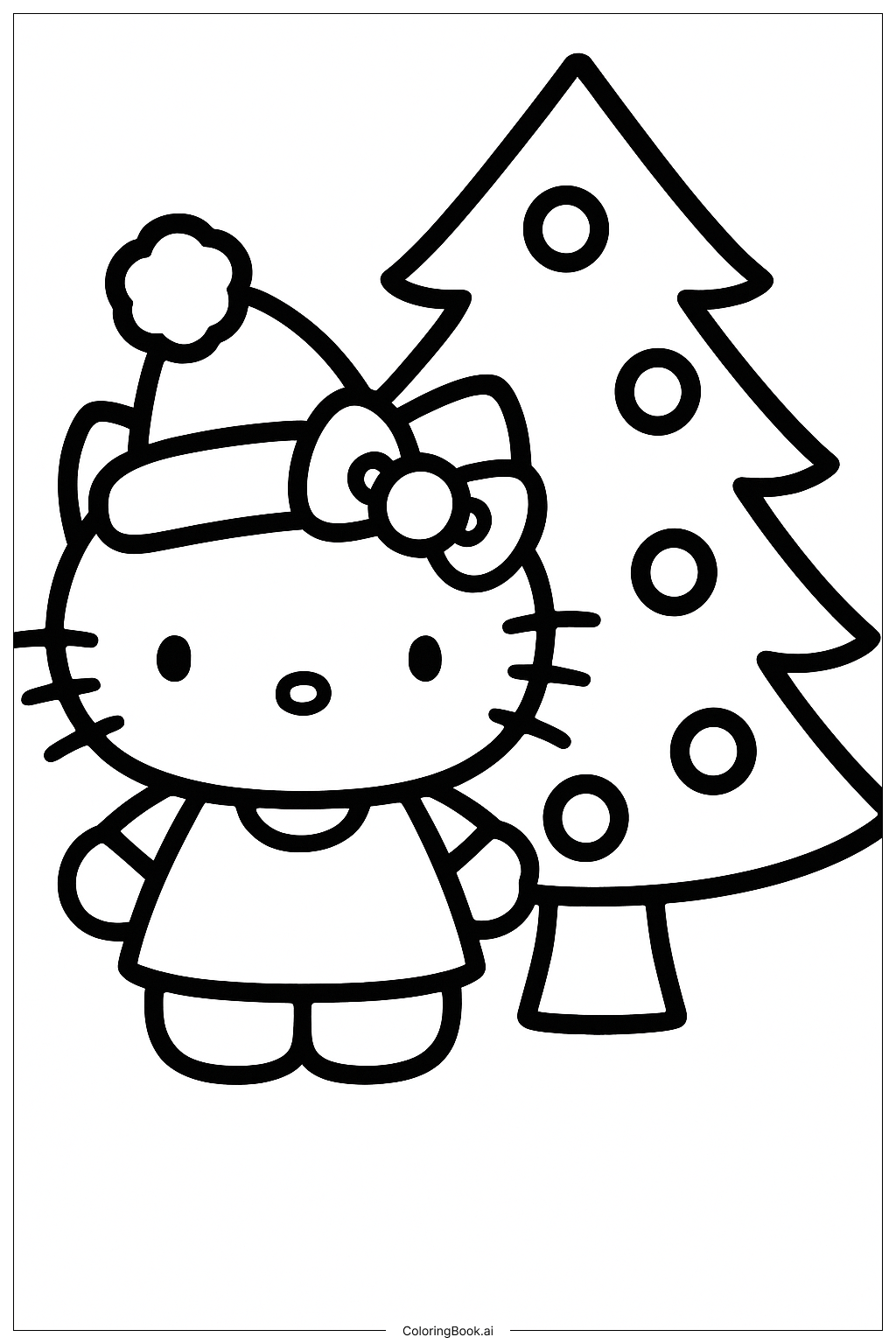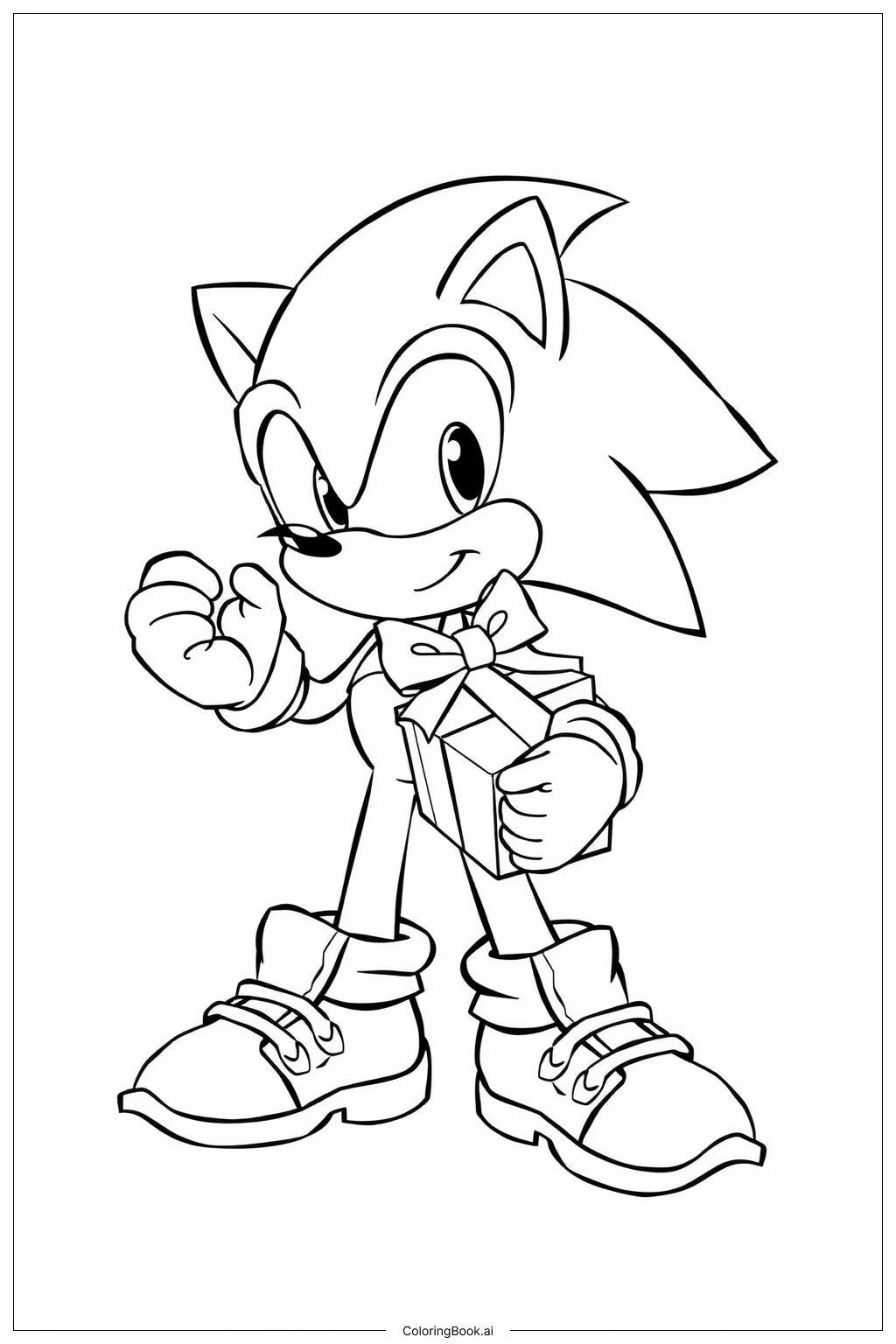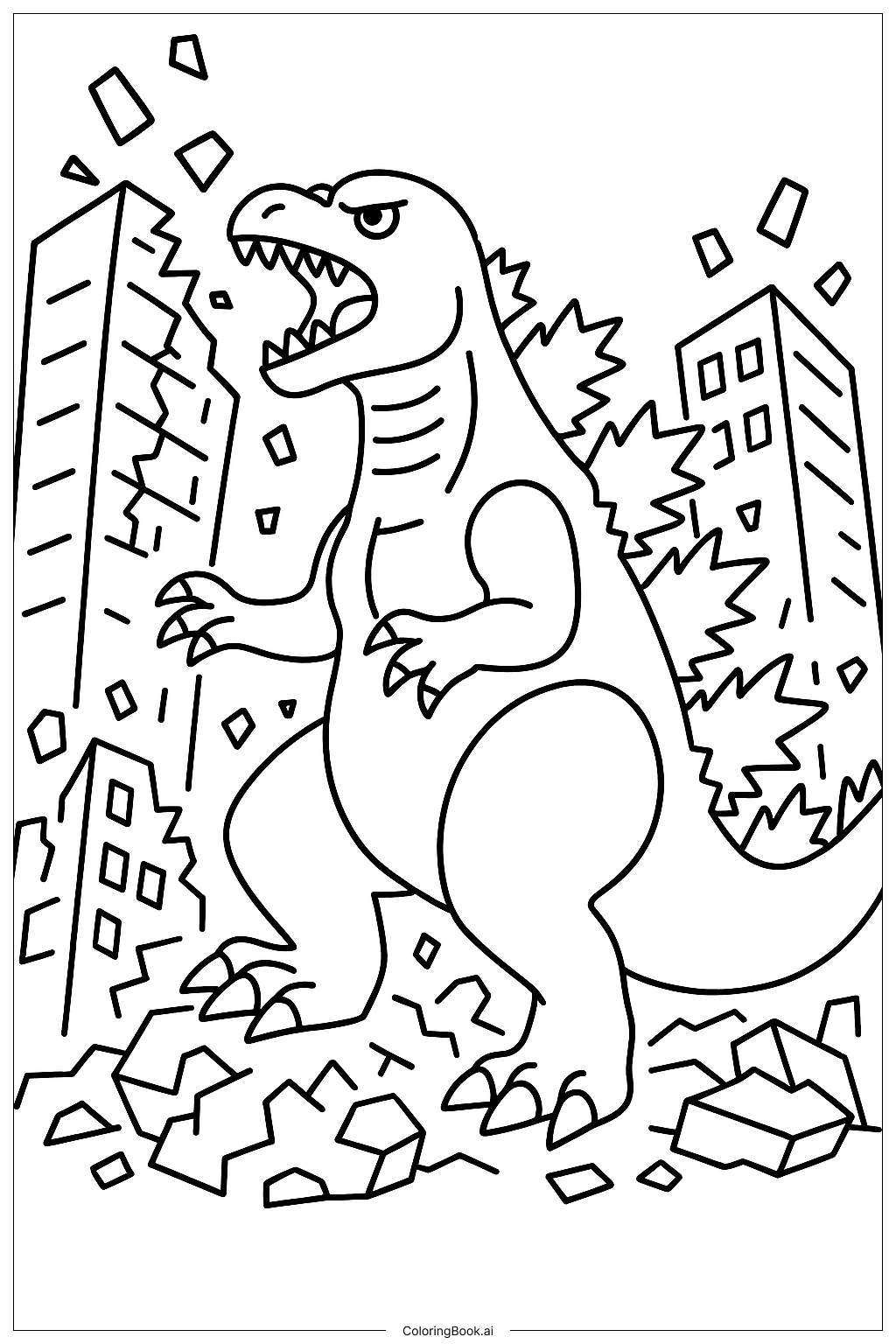Coloring tips: How to color Gengar Looking Surprised coloring page well?
To color this surprised Gengar, you can start with deep purple for its main body and head, which is the common color for Gengar. Use lighter purple or pink shades inside its mouth and for the tongue area. Its eyes can be white with black pupils to keep the surprised look strong. Try to add a bit of shading using darker purple around the edges to give Gengar a more three-dimensional look. Don’t forget to color the jagged parts on the ears and feet the same deep purple as the body. You can also experiment by adding a glowing effect around Gengar to show its ghostly nature using light blue or violet crayons or markers.
Coloring challenges: Which parts are difficult to color and need attention for Gengar Looking Surprised coloring page?
1. Staying inside the thick bold lines while coloring can be tricky, especially around the sharp spikes on Gengar's head and the fingers on its hands.
2. Coloring the eyes carefully to keep them white with black pupils requires patience and a steady hand; filling in small areas without going outside is challenging.
3. Creating shading or glowing effects to make Gengar look more three-dimensional can be hard for younger children who are new to blending colors.
4. Balancing colors inside the open mouth area, making sure to show depth with lighter tones while remaining neat, might require extra attention.
5. Coloring the rounded body evenly without leaving white spots or streaks needs focus and time, especially with darker colors like deep purple.
Benefits of coloring books: Advantages of drawing Gengar Looking Surprised coloring page
Coloring this surprised Gengar helps children practice fine motor skills as they try to stay within the lines and color the small areas like eyes and spikes accurately. It encourages creativity by allowing them to explore shades of purple and even add effects like glowing to reflect Gengar's ghostly powers. Completing this page gives a sense of accomplishment and builds confidence. It also introduces children to the concept of emotion in art, as they see how colors can highlight feelings such as surprise. Overall, it is a fun way to improve focus, hand-eye coordination, and artistic expression.
